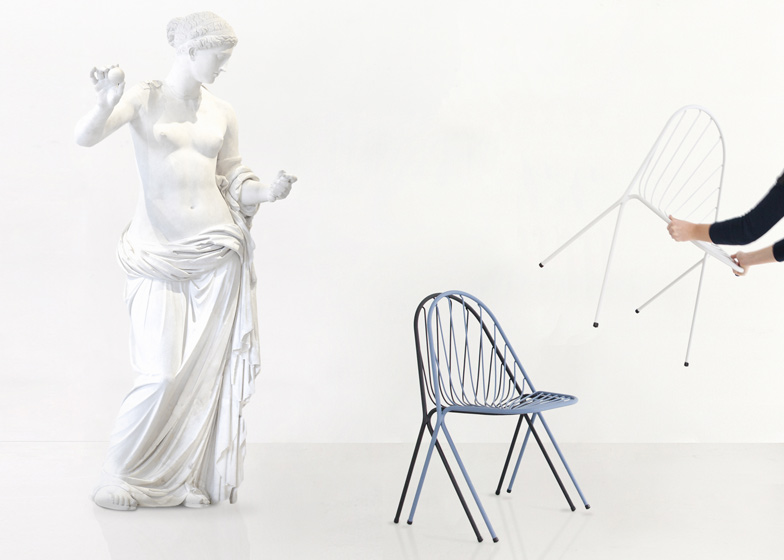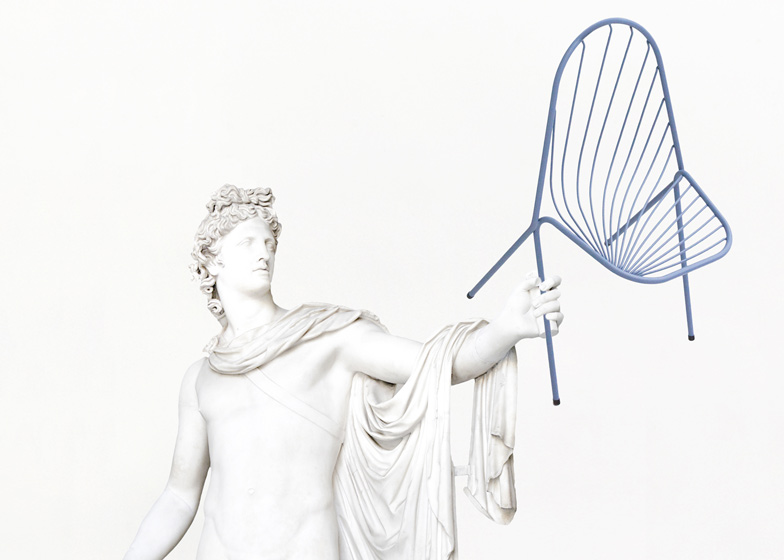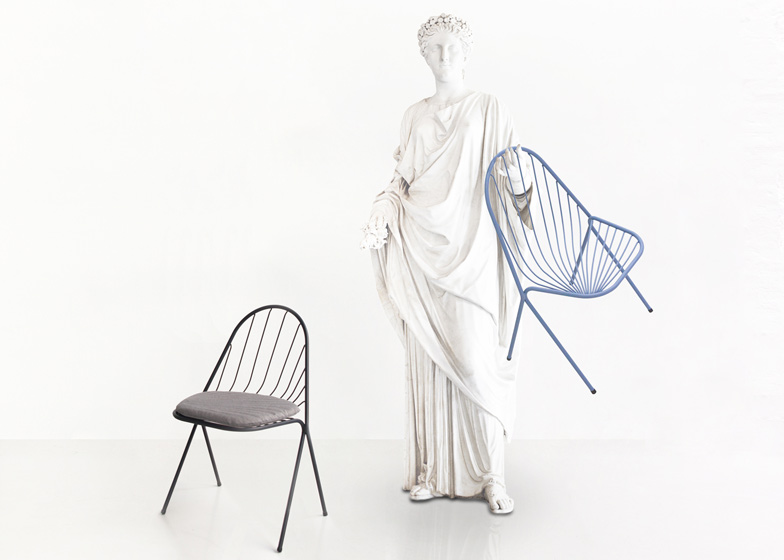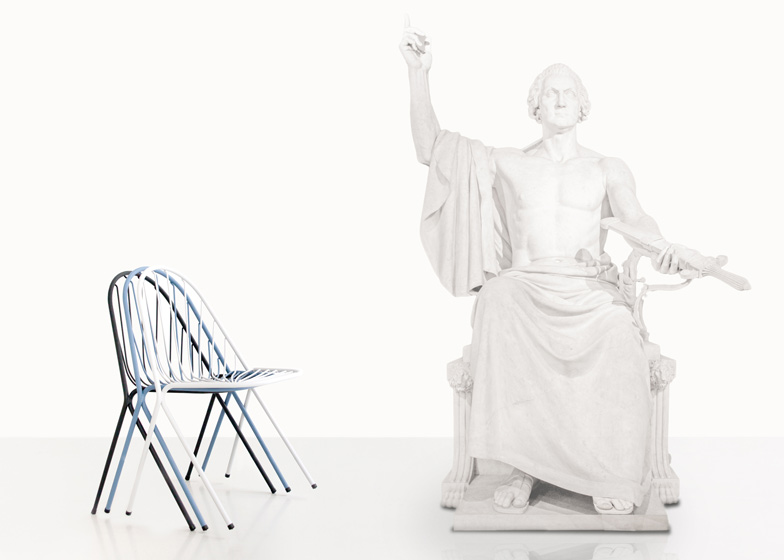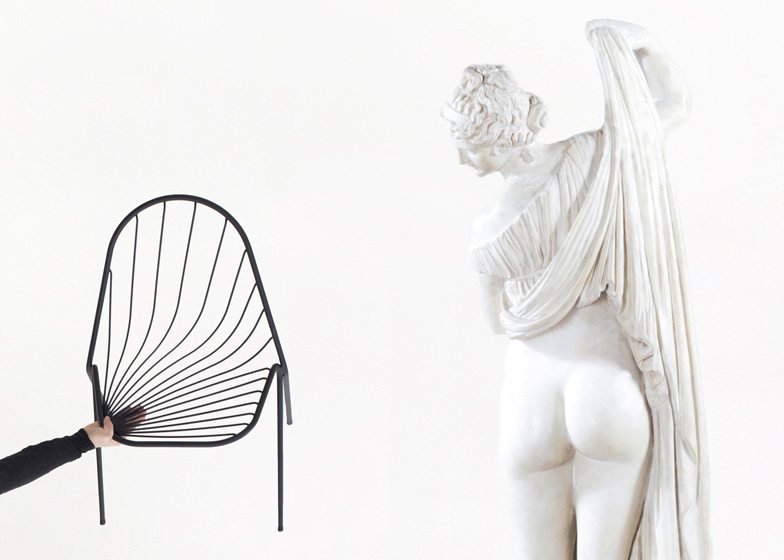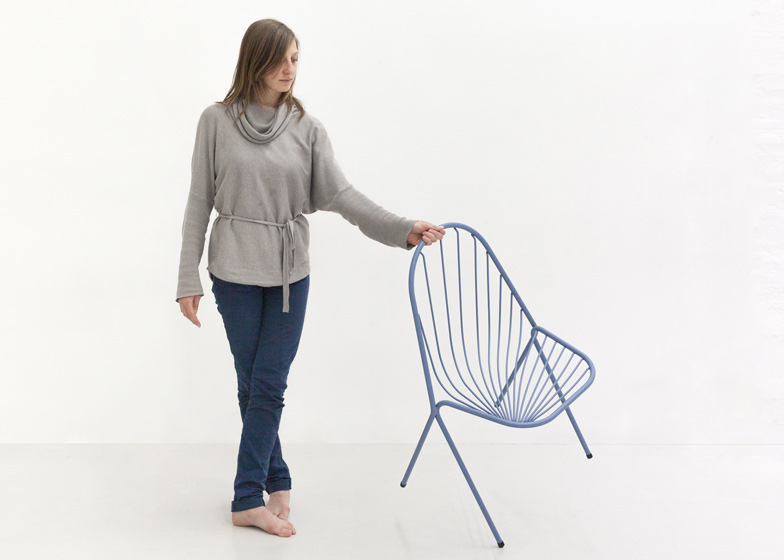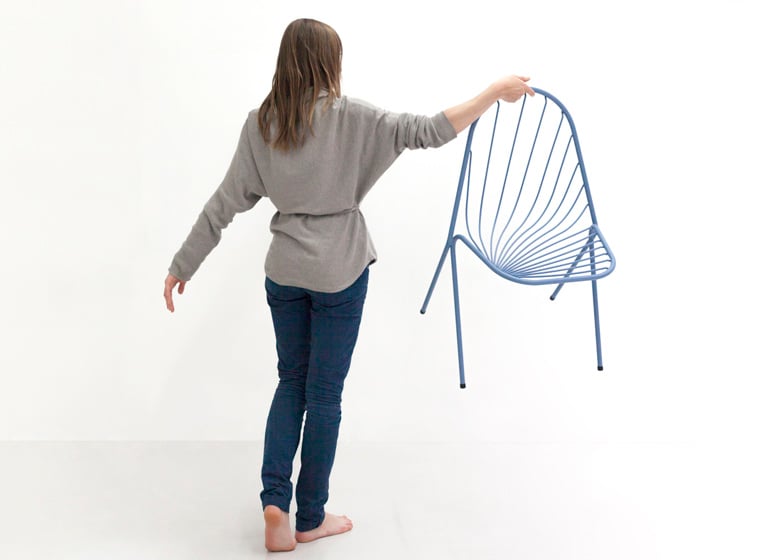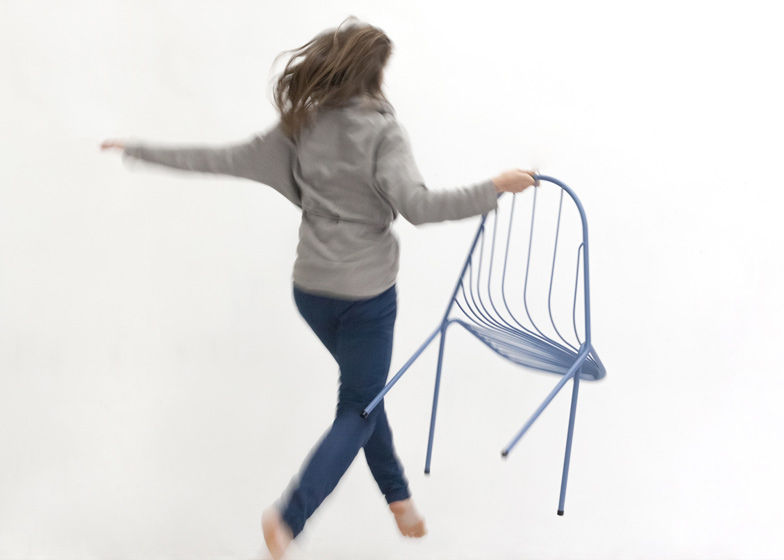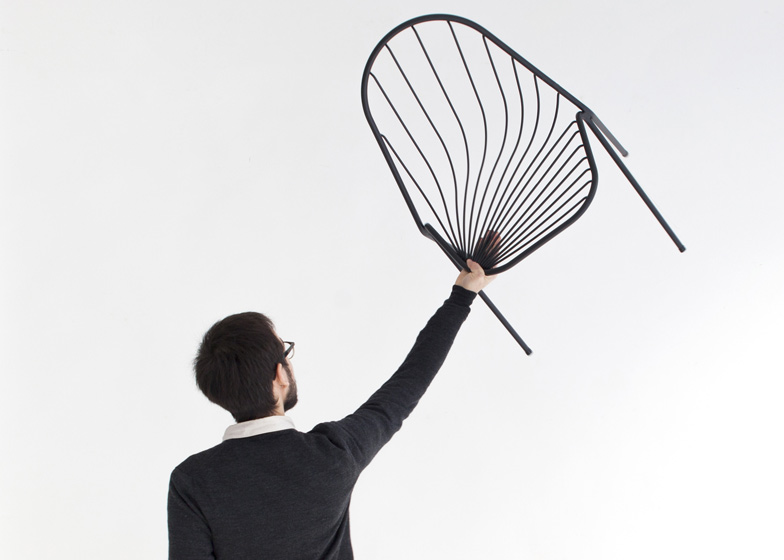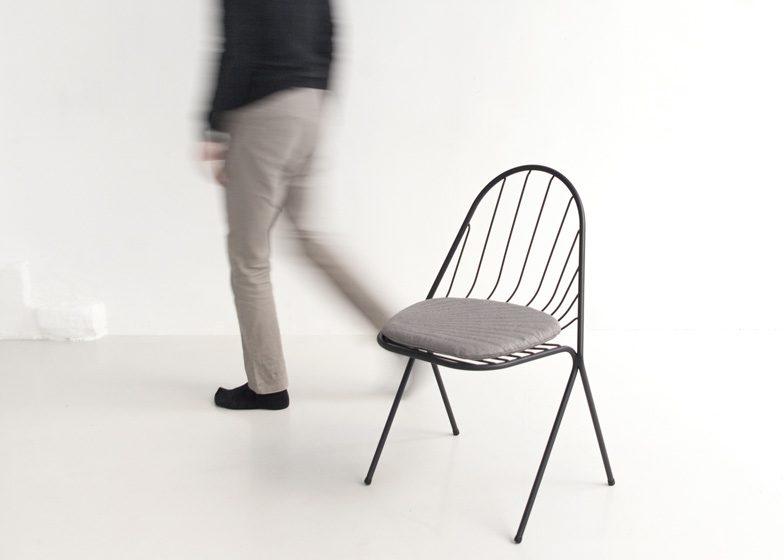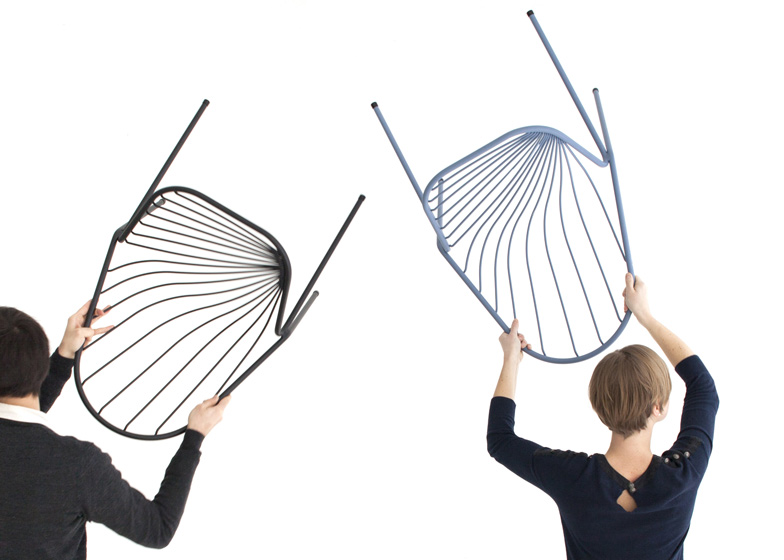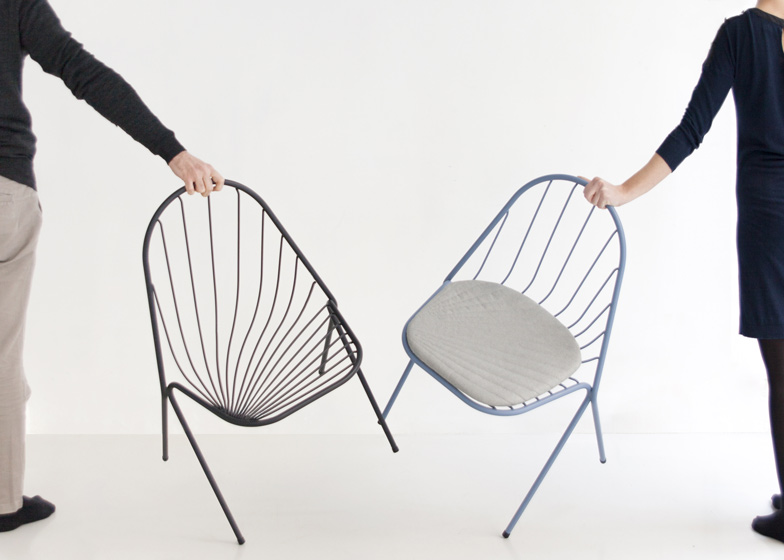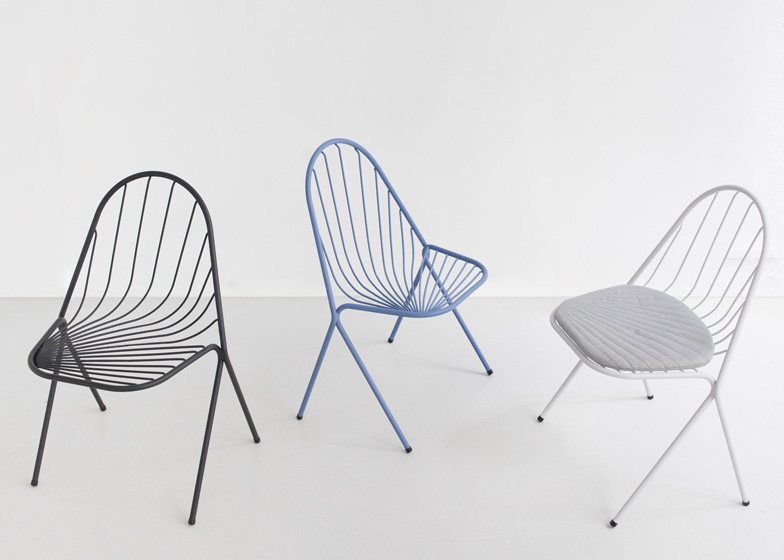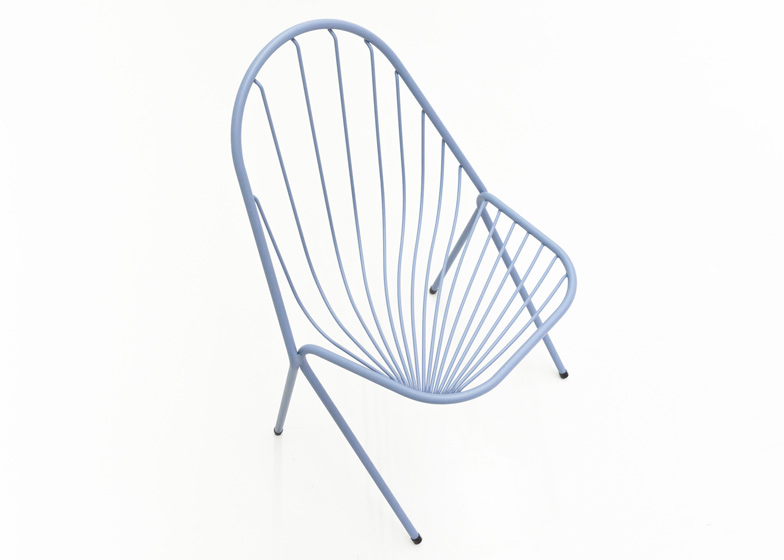The curving lines of this steel wire chair by French designer Constance Guisset are intended to represent fabric draped over the seat and back (+ slideshow).
Bent steel rods that form the surfaces of the backrest and seat of Guisset's Drapée chair appear to gather in one of the seat's front corners.
"I am very much interested in fabric and soft materials," Guisset told Dezeen. "A drape is fascinating because it recalls fluidity and a certain impression of movement. I wanted to recall this movement with a few lines, as if a fabric had been left on a chair frame."
The frame is made in two sections; a front piece with angled legs and a rounded back that are joined at the rear of the seat and held in tension by the steel wires.
The designer worked with a metal fabricator to develop the position of the lines, which were originally drawn using computer-modelling software but required an iterative process of refinement in the workshop.
"As the chair is made of free-form wires it was quite a challenge to make it comfortable and rigorous," Guisset recalled. "After each wire was welded, we tested comfort and observed the shape, unwelding lines as many times as necessary and doing it again. In the end we spent three full days in the factory, just for a tube frame and 16 lines in wire!"
The chair is designed to be used in homes or restaurants and therefore needed to be lightweight so it can be moved easily, and stackable for saving space.
"It was a real desire to make it strong, comfortable, stackable and light at the same time," said Guisset. "It was also about visual lightness that is a deep aspiration in my work. As it is built with just a few lines of tube and wire, physical lightness is a natural consequence."
The product is available in black, white, gold and pale blue finishes. A separate cushion pad features a pattern that replicates the lines of the seat.
Guisset's promotional photography presents the product alongside marble statues wearing the sorts of draped fabric garments that inspired the design.
"I often visit museums and take pictures of draped sculptures," said Guisset. "I feel a very soft sensuality in them, so it was quite natural for me to use some antique and Italian sculptures. I wanted the pictures to express the freedom, lightness and dancing qualities of the object. The drape was highlighted by the sculptures’ presence."
Drapée was exhibited by French design brand Petite Friture at last month's Maison&Objet fair outside Paris.

